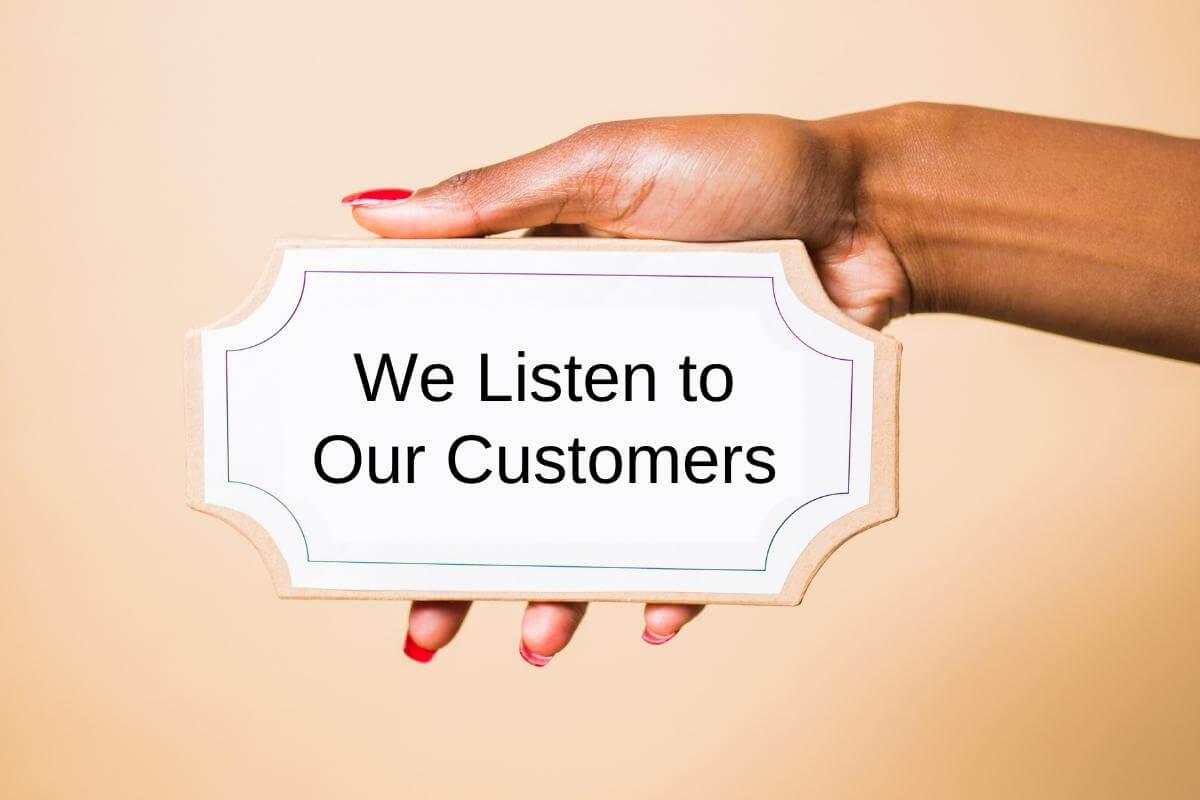Table of Contents
You put up your own small-sized e-commerce retail business some years ago. Thanks to your determination and hard-working team, your startup has finally taken off. Sales are increasing and orders keep coming in, but you find yourself short of staff to handle customer inquiries and requests.
To help your employees with the increasing load, you personally answer customer issues via calls, emails, and live chats. Customers continue pouring through your e-commerce site as weeks pass by.
Business is brisk even during regular months. As a major holiday approaches, you expect sales to go through the roof and more customers to flood your office phones and website. You finally come to the conclusion that with this uptrend (and you’re thankful for it), your limited workforce will not be able to sustain offering a favorable quality customer service.
How about outsourcing your customer service? Have you thought about this business strategy? Are you familiar with this concept? Did you know that this can be an answer to your concern about providing high-quality customer service?
Read on to find out more about it.
What Is E-commerce and Retail Customer Service Outsourcing?
Let’s first briefly explain what e-commerce is.
According to the online business resource Investopedia, electronic commerce (eCommerce or e-commerce) refers to a business method by which companies, organizations, and persons are engaged in the buying and selling of goods and services through the internet. Online transactions can be performed through a virtual place called a website. This electronic location can be easily accessed using digital and internet-connected devices, such as smartphones, tablets, desktops, and laptops.
Considered a disruptive technology because it has significantly changed the way individuals and businesses operate, e-commerce is possible for almost any kind of commercial activity, ranging from purchasing products, booking plane tickets and hotel rooms, paying bills, investing in stocks, and real estate to downloading music and films.
There are four types of e-commerce market segments: business to business (B2B), business to consumer (B2C), consumer to consumer (C2C), and consumers to business (C2B).
B2B is the exchange of goods and services between businesses, industries, or organizations while B2C pertains to companies selling goods and services to individuals. C2C involves persons selling to one another while C2B is when individuals sell goods and services to companies, organizations, or corporations.
E-commerce has dramatically changed the global retail landscape and become a popular means of doing business. Its growing popularity is due to the convenience, simplicity, and wide array of products-and-services choices this innovative business model offers to consumers of all types. Investopedia notes that total e-commerce worldwide sales were placed at $4.3 trillion in 2020 and are expected to increase to $5.4 trillion in 2022.
E-commerce Customer Service Outsourcing

By definition, customer service is basically the professional assistance your business provides to every potential and actual customer in connection with your goods or services. You offer this interaction before and after selling your product or service to address customer needs and concerns. Customer service can improve their experience with you and your image to them.
The ultimate goal is to consistently deliver high-quality customer service to boost your brand, maintain current customers, and attract more prospects. Repeat purchases and patronage typically happen when customers have an excellent after-sales experience. They tend to move away from sellers or providers that deliver lower-than-expected customer experiences.
Outsourcing is the business practice of delegating or farming out certain job functions to a third-party vendor or group. With this strategy, your company contracts with an external firm to take care of certain specific tasks. Doing so allows you to cut costs, improve the efficiency of these particular functions, and place more focus on your core competencies or specialties, to name some of the benefits.
Having defined every term, e-commerce customer service outsourcing can be simply put as a strategy of hiring a third-party service provider to properly manage customers’ concerns, issues, and requests regarding the products or services offered by your online business
As an e-commerce retail operator experiencing steady sales growth and an influx of consumer calls and queries, is customer service outsourcing the right strategy for you?
Why Is Customer Service Outsourced?

Some facts:
Ireland-based market research firm Research And Markets reports that the worldwide outsourced customer experience industry is projected to hit $81.5 billion in 2023, increasing at a compound annual growth rate of 3.5 percent from 2019 to 2023.
The study adds that the market rise is fueled by several factors including the growing number of smartphone users, the big data technology revolution, the flourishing millennial population, and the expanding overseas tourist arrival.
However, the market encountered challenges such as a lack of information supplied to outsourcing companies and language barriers. To address these issues, the market set its sights on certain trends. These are the rising popularity of the internet of things (IoT), the increasing number of internet users, and the expansion of the language services industry.
The report points out that, in terms of service channels, the global outsourced customer experience sector can be classified into specific areas. These are voice/call center, social media, chat/web services, face-to-face/stores, short message services (SMS)/mobile, and e-mail. In 2018, the voice/call center channel lorded over the industry, with social media, chat/web services, face-to-face/stores, SMS/mobile, and email following that lead.
The global outsourced customer experience industry can be grouped into various regions – North America, Europe, the Middle East and Africa (EMEA), Asia Pacific, and Latin America. (LATAM). North America dominated the industry In 2018, with EMEA, Asia Pacific, and LATAM following the lead. The North American region is expected to maintain its top position in 2023 due to the improvement in infrastructure facilities and the growth in demand for outsourced customer experience services from the telecommunications, banking, and retail markets.
Customer Service Outsourcing Statistics
An article on the staffing provider Apollo Technical website lists the four important trends in customer service outsourcing.
1. Cost-cutting will be the main reason for outsourcing
The main reason why a company chooses to outsource some of its functions, such as customer service, is to save funds to enhance core business operations. About 45% of businesses subcontracting their IT process think this strategy is cost-effective. Nearly 46% view outsourcing as a means to obtain skillsets and knowledge that are inaccessible within their organization.
2. The global financial services outsourcing industry is estimated at around $130 billion
Studies reveal that outsourcing in the financial services sector will continue to rise by almost 7.5 percent annually. Financial institutions, including insurance firms, brokerage firms, and commercial and investment banks, will continue to seek the services of third-party vendors regardless of the potential risks related to outsourcing.
3. Close to 25 percent of small businesses outsource to improve efficiency
Many small and medium-sized business (SMB) owners believe that efficiency will help them stay competitive and cope with certain challenges. They see outsourcing as a means to enhance overall productivity even though their organizations lack the financial capability and workforce to establish their own customer service group, unlike large-sized companies.
Data shows that 18 percent of SMBs turn to business outsourcing to acquire the third-party vendor’s expertise, assistance, and broad knowledge. Statistics further reveal that even after COVID-19, 52 percent of small enterprises will still rely on farming out operations that are not part of their central focus.
According to London-based research firm Global Entrepreneurship Monitor, the U.S. has 31 million entrepreneurs, representing 16 percent of the total adult employee workforce.
4. The global managed service provider (MSP) sector is expected to reach $41 billion by 2022
Outsourcing security functions is the biggest reason why the MSP market will remain on the uptrend until the end of 2022. Indeed, cybersecurity operations are the most important services that organizations should outsource. Businesses of all types and sizes require non-stop surveillance. Recruiting a third-party security team is a feasible option. External providers also handle mission-critical data and information, such as websites, communication channels, and databases.
The Reason for Customer Service Outsourcing

Experts say that outsourcing, in general, is viable if not the best option to help your growing business. The strategy is more cost-effective because you delegate a particular operation to an experienced third-party provider that takes care of that sector at a more affordable rate than it would be if your own company recruited additional regular employees to do the job.
Outsourcing is a business practice that allows your company to concentrate more on its core tasks while letting a qualified external professional group manage your secondary, but equally important, functions. The group’s in-depth knowledge and expertise will save you critical financial resources that can be allocated to more productive ventures.
Many of these external providers are business processing outsourcing (BPO) companies that can quickly become well-versed in your policies, services, and products. BPOs are formed to assist you to be more operationally cost-effective since they efficiently manage your manual, redundant, and repetitive tasks.
Some of the BPO organizations include Unity Communications, Cognizant, Genpact, Accenture, Concentrix, IBM, Invensis, Teleperformance, Wipro, EXL Service, Octopus Tech, SunTec India, Triniter, and Plaxonic Technologies.
Outsourcing Customer Service to BPO Is an Ideal Way
According to an article published on the business magazine Forbes website, there are several benefits of hiring a BPO. A business survey conducted in 2020 showed that 97 percent of respondents experienced a decrease in in-person marketing engagement because of the COVID-19 pandemic. It also revealed that marketer optimism levels went down and noted an increase in spending on customer experience.
The article adds that outsourcing with a BPO can release additional funds and slash labor expenses. When hiring internally, a company adds fixed costs to its balance sheet. With outsourcing, these costs turn into variable expenses. The capital can then be diverted to other business operations.
An outsourced solution is one where services are farmed out for particular roles and performed by BPOs, oftentimes at reduced prices. This can reduce labor costs and, with regard to sales and customer service, it can save the organization a substantial amount of money in training, recruiting, paid time off, overtime pay, and similar expenses.
The blogsite notes that a BPO, commonly called a call center, operates at a considerable cost annually, depending on the number of agents or representatives it employs. Outsourcing to a BPO located overseas or offshore can significantly reduce your costs. Several places, such as the Philippines and India, have ample local English-speaking and bilingual talent and companies can benefit from them. A BPO can save organizations time and effort in hiring and training current and new agents.
The post goes on to say that companies can minimize the risks of outsourcing some aspects of their business by making sure the BPO can align with its culture, customer experience strategy, and vision of customer-focused behavior.
Advantages and Disadvantages of Outsourcing Customer Service

As with any service, outsourcing customer service has advantages and disadvantages. It is important to weigh the benefits and drawbacks of this strategy before making your final decision. Whether you are a startup or an established company, the way your third-party vendor or BPO treats your customers can affect your bottom line.
Advantages
Business.com, a website for business news based in Massachusetts, discusses the pros and cons of outsourcing customer service.
One of the benefits is cost savings. Hiring contract workers, such as call center staff, means paying a fixed salary or giving employee benefits is not necessarily required. Your business does not need to purchase additional equipment and other devices for customer service representatives to use. A workstation that includes a computer, software, a headset, a desk, a chair, an extra monitor, and other gadgets could cost about $5,000 for one customer service representative. Clearly, outsourcing can lead to substantial savings.
Another advantage is the after-hours coverage: Many customers prefer to contact your customer service team anytime, even during off-hours. With outsourcing, you will be able to stay ahead of your competitors by offering customers round-the-clock assistance on all channels, such as email, social media, online chat, and instant messaging. Call center staff can be accessible 24/7 to support and address their concerns, issues, and requests.
More language options than English is among the reasons why outsourcing is helpful to your business. BPOs that offer multilingual services can help expand your customer base because you can reach non-English speaking buyers or consumers. If your current or potential customers are Chinese or Spanish speakers and they find difficulty in talking in English, your BPO can hire or access agents who speak these languages to deliver customer service. As such, communication barriers are no longer an issue and your customers feel more at ease and confident transacting with your company when their concerns and questions are resolved more clearly.
Less work volume is also one of several perks associated with the outsourcing of customer service. You and your employees are not only responsible for sales but also for responding to customer phone calls and emails. Although taking care of customer issues and concerns is important, it distracts your team from what you do best as well as other more critical matters. When most of you are busy from time to time, customers are unintentionally neglected and left with their questions unanswered. With outsourcing, you’re no longer required to wear many hats and you have more time to concentrate on improving sales. Customers are attended to professionally by your third-party provider.
Disadvantages
One of the drawbacks of outsourcing customer service is that your external service provider may not be as passionate as you and your team. One reason is that a call center agent may be dealing with inquiries not only for your customers but also for those of other clients. Your company may not be their main priority because they also serve other clients’ customers. To solve this problem, hire a BPO that provides you with dedicated agents to guarantee that your customers will be handled with better skills and knowledge.
A reduced rate of customer satisfaction is among the main concerns of numerous business owners. They worry about losing customers if they outsource their customer service to call centers or other third-party vendors. Some customers can be choosy when it comes to interacting with agents. They prefer customer service representatives who speak the same way that they do themselves or have the same accent as theirs because it is felt that these similarities make it easier to better understand their questions. To resolve this concern, you should first examine a BPO’s track record and reputation. Don’t forget to request references for any company you are considering hiring.
Another issue is security. Many businesses, particularly in the financial, utilities, airline, and similar industries entail the disclosure of critical personal information to call center agents or to third-party websites. These vital data include home addresses, complete personal names, credit card numbers, and bank account numbers, to name a few. Entrusting such information to an outsourcing company causes much concern about the protection of customer privacy and safety. To address this concern, ask your potential BPO about technical security measures and policies. Many BPOs adopt multiple protection levels to guarantee customer data’s safety and privacy.
There is also concern that the knowledge level of outsourced agents might not be on par with your in-house group. This issue is understandable because BPO employees don’t know the ins and outs of your business, unlike your team members who work with you through thick and thin. To bridge the knowledge gap about your products or services, you should coordinate closely with your BPO and establish a regular communication line. Ask your vendor to provide you with dedicated or specialized agents to focus on your business. Always inform them about your latest product and service launches, new policies, price changes, and similar updates.
What Are The 3 Most Important Qualities Of Customer Service?

In her blog, customer experience and marketing keynote speaker Brittany Hodak identifies the three important qualities of customer service. These are the three “P”s (3Ps): professionalism, patience, and a “people-first” attitude. There’s no arguing that customer service differs from one customer to another, and applying these 3Ps will keep you in the right direction.
First “P” in Customer Service: Professionalism
Hodak says the first “P,” professionalism, is the most basic one and pertains to the attitude you have towards customers. It’s your responsibility to calm things down when a caller is irate or loses self-control. It is recommended that you carry out all the reasonable and acceptable means to maintain the favorable image of your product or service. Staying poised and in control when engaging an upset customer takes practice and experience
She adds that being calm and collected is one of the most essential elements of professionalism. If customers are frustrated with your product or service, you or your employees can have the tendency to reply to their criticisms with a similar volume and tone of voice. However, keeping calm in the middle of their complaints will give them the impression that you can help them solve the problem.
Hodak notes that you should see poor customer experience as a learning opportunity. Difficult customers, no matter how excessive their reactions or complaints are, somehow have a logical reason for being unsatisfied with your product or service. It is suggested that you put yourself in the customer’s shoes and focus on how to address their current concerns. This approach will allow you to avoid the same kind of engagements in the near future.
The opportunity to turn a bad customer encounter into a learning experience is present all the time. There is always a way to learn and improve. It’s up to you to discern those paths. For instance, if a customer complains that an item is out of stock, then it’s a chance for your business to assess your stocking system. Or if you notice that more customers are not satisfied with your product or service, then this can be the suitable time for you to upgrade, modify, or improve your brand.
The most important point to remember is that you are paid to help each and every unhappy customer and restore your healthy business relationship with them. Professionalism involves both calming the situation and learning from it.
The last element of professionalism is also investing in your staff. Treat your employees the way you do your customers. Many companies are inclined to focus more on customer satisfaction than employee fulfillment. If this mindset persists, your workforce’s morale and job satisfaction can go down. Unsatisfied employees may find it hard to deliver a great customer experience when they themselves are having a poor experience with your company.
Empowering your employees as well as you offer an excellent experience to customers will enhance your customer service environment. One way of going the extra mile for your staff is to provide them, if possible, with financial perks or incentives and encourage them to come up with better or new ideas for increased productivity. After all, well-satisfied and highly motivated employees will translate into serving customers at a higher level.
Second “P” in Customer Service: Patience
Hodak cites patience as the second “P,” comparing it to a frame, with professionalism as the foundation of a solid customer service strategy. Patience is considered a vital part of the equation because calm communication with a customer is difficult to achieve without it. This is necessary for you, your employees, and your customers for smooth and meaningful interactions.
Being flexible in addressing customer needs is one way to show patience. Sometimes you have to bend (but not break) some company guidelines to help customers with their concerns. General service policies are made to guide employees on how to handle customers. However, going the extra mile to accommodate customers’ requests will give them the best possible experience. Consumers who receive excellent service will likely come back and buy your product or service again.
She points out that letting customers grow at their own rate is another way of applying patience to your service policies. Customers have their own concerns that may be simple for you but confusing to them. You show patience by letting them direct the pace of the initial interaction and not rushing them. Then you gradually and properly guide the conversation along the way to allow you to offer them appropriate options and solutions in the end. This move makes customer communication smoother in closing.
Giving customers time to learn and grow at their own speed is also a way of showing that you truly care and want them to be satisfied with your product or service. Such a method will make them feel more at ease and confident about calling you back with feedback or requests. You can use their reactions and comments to further enhance your service to them.
To build and improve patience, encourage employees to always practice self-care. Delivering a consistently high level of customer service is not an easy feat. Going the extra mile, being flexible, and guiding confused or tough customers, among other things compels your staff to expend a considerable amount of mental or physical effort. One way to promote this practice in your organization is to offer periodic free counseling to take care of employees’ mental well-being. This is in addition to the main perks, such as work-life balance, extra vacation, flexible work schedule, paid leaves, and more. Nothing compares to the benefits derived from throwing all your support for your customer service employees financially as well as mentally.
Third “P” in Customer Service: People-first
Equally important is the third “P”– people-first attitude. Having this mindset enables you to prioritize the customers’ needs and concerns while remembering to treat them as individuals with feelings and emotions. This attitude urges you to be empathetic with customers: you think about whether they understand you when voicing their concerns; feel valued or appreciated when buying your product or service; or know that you see them as individuals, not just customers.
Hodak points out that empathizing with customers is essential to maintaining a people-first attitude. You have to understand them regardless of their approach or tone during an interaction. She adds that being empathetic to their experiences, whether related to your business or their personal life, will help them improve their day. Making them feel heard or valued will boost the chances of them coming back to you again.
She goes on to say that personalizing and connecting with customers is an important part of carrying out a people-first attitude, which should be fostered to develop a long-term relationship with each customer. One method of personalization is through client gifts. A personalized gift is a means of showing you care about the customer as a person and appreciate their support. Samples of such presents include customized office items, family fun packages, and relaxation gifts.
What Retail Services Can Be Outsourced?

Aside from customer service, other aspects of your retail business can be subcontracted. Canada-based e-commerce provider Shopify lists the types of retail services that can be outsourced to a BPO or a third-party vendor to help you stay focused on your core competencies. These are content marketing, web development, IT functions, warehousing and fulfillment, and administrative tasks.
- Content Marketing
You can begin outsourcing with marketing and content, which are the processes retail businesses use to propel traffic and leads. The content creation or development sector is filled with freelancers and companies eager to assist you. Content needs vary depending on the nature of your retail enterprise. Outsourcing content includes writing, social media, photography, paid marketing, and design.
The external provider or partner is responsible for your marketing activities and campaign. These range from strategy formulation, content development and editing, publishing, distribution, and data monitoring and analysis. The third-party entity also provides you with a content marketing team, such as content developers or strategies, account managers, editors, writers, and editorial assistants to collaborate with you in achieving your marketing objectives.
Your retail company may not have the time and expertise to launch your own content marketing. Turning to an outsourcing group to help improve website traffic, form thought leadership, and convert online prospects into buyers is a recommended strategy. Experienced content markets can quickly and efficiently develop web articles, infographics, whitepapers, and blogs, to name some, to help your marketing endeavors achieve new heights.
- Web development and IT functions
IT functions are vital elements of a thriving online retail business. But handling the business IT aspects such as point-of-sale, back-end, or other related systems may not be your forte. Although IT maintenance is oftentimes minimal, unexpected situations such as serious technical issues, major upgrades or updates, or company-wide system deployment will delay or disrupt your operations.
Experts note that more e-commerce retailers are becoming open to the idea of outsourcing their IT functions to effectively take advantage of the incoming emerging technologies. Internal or in-house IT teams are not always capable of managing these developments and can lack the skill in using them for the company’s full benefit.
When your IT system crashes or experiences critical difficulties, the risk of losing potential customers and business deals rises. Farming out your IT and web development requirements helps you fix such major incidents. Third-party vendors also have the expertise and deep knowledge that they can share with your organization.
Since the IT and web development areas are sensitive components of your retail operations, it is recommended to hire a reliable and industry-certified professional external provider. Doing background checks and research, requesting references, and checking out online reviews are some of the tasks you need to conduct before bringing in a partner for assistance.
- Warehousing and fulfillment
Many e-retailers take care of customers’ orders, from packing and handling to shipping. They do these processes on their own to save money, manage inventory, and keep track of supply. This approach is ideal but limited, particularly when your business starts to grow faster than you expected and you receive more orders than you can comfortably handle. When reaching such a point, outsourcing the warehousing and fulfillment part of your retail service can be a better option.
California-based logistics company Asiana USA says on its blog site that allowing a third-party provider to outsource warehousing and fulfillment or startups and small businesses will optimize their supply chain. This means a smoother flow of orders, lower costs, more manageable cash flow, and more effective transportation procedures.
The blog adds that among the benefits of outsourcing the logistics side of your retail operations are reduced capital expenses, scaling opportunities, shipment consolidation, decreased operating costs, access to the latest technology, time savings, location advantage, and availing oneself of the provider’s expertise and extensive experience.
- Administrative tasks and duties
Outsourcing administrative tasks is a proven method for an e-commerce retailer to save time, money, and effort that can be used for more productive purposes. Independent contractors who provide administrative services such as virtual assistants (VAs) can considerably help your retail business with daily office needs.
VAs who work from remote locations are becoming increasingly popular among online small businesses that are short of staff to perform important administrative duties. They are also considered the least expensive service to outsource because you can avail yourself of these services from freelancers and experienced individuals in countries outside the United States with lower labor costs.
Staffing service provider Recruiter.com says a business can focus more on mission-critical tasks when regular and basic functions are given to a third-party supporter. These tasks include bookkeeping, data entry, social media and email campaigns, blog or website management, managing human resources (HR), and payroll.
The benefits of outsourcing administrative tasks include: gaining flexibility, cutting costs, enhancing efficiency, offering consistent customer service, and expanding your client list. Before farming out your work to VAs or a third-party vendor, first determine the reason(s) why you want to outsource these specific tasks and how this strategy will help your retail business.
- Other retail services
An article on the US government agency Small Business Administration website says over a third of the nation’s small businesses presently outsource some of their operations. This business practice allows small and medium-sized enterprises to entrust vital tasks and processes to experts or professionals while keeping costs under control and boosting efficiency.
The blog lists small businesses’ functions that are frequently outsourced. Traditional and online retail operators also frequently outsource these tasks. The list includes accounting (if you’re not a financial expert and can’t find a skilled accountant), marketing (to handle ad design and social media management), sales (to make sales calls, set up funnels, or close deals), manufacturing (to have your products produced instead of putting up your own facility), research (to learn more about your industry, competitors, and customers), and HR (to hire, onboard, and handle your team).
How Do You Provide Exceptional Customer Service in Retail?

Ireland-based e-commerce software provider eDesk lists ways to provide great customer service in both online and physical retail businesses. Here are some examples:
- Utilize Customer Relationship Management (CRM) Systems
It is important nowadays to acquire customer service software to efficiently serve your current and potential customers. This advanced tool will help your team collaborate and respond better to customer inquiries, complaints, and requests. It can also assist you in developing and maintaining high-quality customer service standards. A CRM platform plays a major role in customer service strategy, offering a seamless operation for a great customer experience.
A CRM network can deliver insights about your customers so your team will better understand their needs and set up a more personalized service. The platform not only helps your customer service team engage with customers more thoroughly for relationship building but also enables them to collaborate more with your sales team in the areas of cross-selling and upselling. It is accessible by multiple digital and internet-based devices, such as desktops, laptops, tablets, and smartphones to respond to customers at any time, regardless of your team’s location.
- Make the Extra Effort
Exceeding customers’ expectations is one way of delivering excellent customer care. From your employee’s review of customer transaction histories in the CRM platform to calling them by their preferred names during conversations can make them feel that your service is more knowledgeable, professional, and personalized than that of others.
Small gestures can make customers feel valued and are not ignored most of the time. Many customers appreciate being treated in a special or personalized way. The great point about showing small gestures toward customers is that it doesn’t cost your business anything and is likely to contribute to higher sales.
- Swift Response
Many online customers these days expect you to answer their questions and requests within a day. Whether through an email or chatbot, addressing their concerns as fast as possible is important to maintain top-notch customer service. The customers should feel that they are your main priority. Responding quickly, either online or in-person will assure that you care about their issues and current experience.
As a general rule, replies to customers should be prompt, precise, and polite. Customers will notice that you respect their time when resolving their problems related to your product or service as quickly and accurately as you can.
- Organize an Exceptional Customer Service Team
Forming your own outstanding team involves hiring members who have the expertise, empathy, and patience to deliver a high-quality customer experience. Team members should be well-trained and enthusiastic about their responsibilities and supported with tools and systems to make tasks less difficult and more manageable.
You should recruit the right people for the job; not everyone can handle customer service.
To hire the best candidates, your organization should adopt careful and thoughtful hiring procedures that can identify the right attributes of a customer service agent.
Equally important is to offer perks and incentives to your team to boost morale. Offer each member and/or the entire team rewards when goals are met or exceeded. Treating your employees with financial or material appreciation will encourage them to always go the extra mile.
- Get Some Feedback
Asking for feedback is the surefire way of knowing customer service performance and improving it. Your employees can do this simply by requesting each customer to send a feedback sheet after their interaction. This procedure enables you to learn about the customer experience during the communication, what areas should be strengthened, and which team or member should be rewarded.
Online reply forms submitted to customers can produce relevant information that you can use to gain important insights. The feedback can also be used to enhance processes and modify practices that generate better solutions and services for customers. Make it a habit to regularly gather feedback to ensure that your customer service program is continuously effective and to keep employees always on their toes.
- Pay Attention to Your Customers
Each customer should be treated as a person and not as a sale. Each individual’s situation is different from another’s. Listening to your customers to fully understand their concerns and issues is among the most crucial parts of customer service. When employees figure out what the customers want by listening, resolving their concerns will be less challenging.
Your staff should avoid assuming what customers need or want. They should approach each interaction without bias but with empathy. Listening attentively is an essential step to better grasping and identifying the problems that have to be addressed soon. In the end, being attentive to customers and resolving their concerns will give them the satisfying feeling that they are taken care of.
- Handle Your Mistakes
No matter how detailed and experienced they are, your best customer service team can commit some errors from time to time. If mistakes do occur from your end, then the best thing to do is to take responsibility to defuse tension among customers. Owning your errors but turning them around by addressing them quickly and properly will regain customer confidence.
Although oftentimes hard to, admit a proven mistake is the best course of action to take for the sake of your customers and your product or service. Your customer service agents should be prepared to apologize and guarantee customers that they will correct the fault as quickly as possible. Apologies given to customers and easing the situation while addressing the issue will make customers feel their voices are heard.
- Demonstrate your proficiency
Customers will support your products or services when you show your expertise and competency. A customer service team that is knowledgeable about your brand can help customers in different ways and answer their questions with confidence. Showing your skills helps build brand trust that will keep them coming back and increase your sales.
In this regard, investing in product training for your team is important. Give your service agents firsthand knowledge of your product or service to allow them to fully understand and share it with customers. Current and potential buyers interacting with well-versed employees will give them assurance and convince them to take action in favor of your business.
- Show the Can-do Attitude
Customer service agents should not only always be professional and respectful but they should also show a can-do attitude to customers. This means they offer solutions to any and all possible issues. Most customers are dissatisfied mainly because things are not going as they expected. It’s your employees’ duty to exhibit optimism that problems can be fixed in no time. Showing a positive attitude at the onset of communication immediately builds rapport.
Your team members can avoid stressful situations when they are confident and willing to respond to customer concerns. Customer cases will not escalate when your staff remains positive and in control. Maintaining a can-do attitude despite a challenging situation will give customers confidence in your professionalism, dedication, and determination.
- End the Conversation With Customers in a Better Mood
Knowing the art of closing an interaction with a customer is as vital as knowing how to start one. Employees should learn how to begin a conversation strongly and end it at the same level as well. As a general rule, your team should finish interactions with customers in a better mindset at the end of a call. This approach will also motivate your employees to serve customers with more enthusiasm.
It is advisable before concluding a conversation for call center agents to ask customers if they have other questions they can answer or if they need more assistance. One simple question will ensure that all of each customer’s expectations are met and their concerns addressed.
Real-Life Examples Of Exceptional Customer Service

An article by Farheen Gani published on the California-based software provider Hiver website presents five companies that demonstrated excellent customer service. These are:
- Eventbrite
Established in 2016, Eventbrite is an online ticketing website for live events, competing against
Ticketmaster and StubHub. What makes this event management firm different from its competitors is its high-quality customer service. Dana Kilian, company vice president for customer service, gives some pointers on recruiting and training staff. These tips are to make sure that its partners and customers in the small events organizer market receive first-rate quality services.
Kilian’s basic advice is that your business should pull off a great initial hire. The first customer support recruit should understand your vision of what excellent customer service is. Your hire should have an adequate balance of operations and people skills. The candidate should also know how to inspire and motivate the group to meet the different service-level targets to be a good fit for the job.
Her extra tip is to allow employees balance and flexibility. Eventbrite’s staff has a flexible work schedule with no fixed time or days.
During the interview process, Eventbrite’s hiring managers look for the applicant’s creativity and presence of mind. They value these two qualities above other things, even if the aspirant is not knowledgeable of the company’s product or service. The managers present challenging customer situations to determine if the job seeker can defuse them, address the problem, and use the company’s policy while keeping a pleasant attitude.
- Zappos
The American online clothing and shoe retailer was able to build a remarkable brand and stay ahead of the competition due to its total commitment to customer service. The company says its customer service strategy is to offer unlimited customer call times. Their agents are not limited by metrics or appointed times. A customer can talk to a representative for as long as 10 hours or until the problem is solved.
The Nevada-based e-commerce retailer also notes that its employees don’t use scripts and are urged to make personal relations with customers. Interaction is not only about orders, return requests or exchanges but it is also about things that matter to customers, such as current events, children, weather, sports, and the like.
Zappos founder Tony Hsieh says its employees can conduct customer calls at any time. While most call centers stick to 80% occupancy, the company chooses to pack theirs with more agents so they can have long personal conversations with customers without needing to be conscious of call time or shifts.
Its customer service team undergoes six weeks of training before talking to actual customers. When the training concludes, the employees are offered a month’s salary and asked to resign if they think the company’s customer service standard is too much for them.
- Zapier
Established in 2011, Zapier is a workflow automation software provider based in San Francisco, California. Since starting operations, the company has generated about $50 million in yearly revenues and employs more than 500 workers. The organization’s growth can be mainly attributed to its focus on customer service strategy.
Co-founder and CEO Wade Foster says he started the company with customer care as the top priority. He recalls that in its early days, his group’s primary goal was not to offer the best or the most affordable service but the most care to satisfy customers. This approach will make them come back to work with Zapier.
The organization’s policy is that each member has to participate in customer support for four hours a week regardless of the employee’s role. Learning how to communicate with customers allows each department to help develop products and services that cater to the market. For instance, the engineering group can examine more technical problems, the marketing team can make better insight-driven decisions for product positioning, and the product team can further measure the benefits of the features.
Additionally, the company’s hiring process requires that candidates not only be qualified in their respective roles but also in customer support. This indicates that aspiring engineers should be competent both in technical subjects and customer interaction to be an appropriate fit for the job. Similarly, applicants for content developers or writers should be skilled both in writing and customer empathy to land the role.
Foster points out that just being nice and helpful is a big step towards great customer service. Team members should also know how to tell customers the hard or unpleasant news, such as an expired trial, unavailable product, or inaccessible feature. They have to deliver this tough news in such a way as to show concern and empathy.
- Nordstrom
A fashion specialty retailer formed in 1901, Nordstrom offers accessories, cosmetics, shoes, and apparel for men, women, and children in the US. The Washington-based company sells its products via different channels, such as online, catalog, physical stores, and boutiques. The organization applies a mixture of employee empowerment and high commitment to buyers to consistently provide a great customer experience.
Putting customers first before the business policy is one of its commitments to keep them satisfied. Many employees typically adhere to company rules when encountering tough decisions, often resulting in customer disappointment. That’s not the case at Nordstrom, where staff is highly encouraged to use their best judgment in any situation. They are also urged to set lofty professional and personal objectives, with the company fully supporting them to achieve such goals.
Company co-founder John Nordstrom said employees should not be criticized for finding new ways to deliver excellent customer service. By contrast, the company disapproves of staff that doesn’t look after the customers’ needs and concerns.
Moreover, the luxury store chain’s customer care goes beyond its customer service. At its physical stores, buyers are offered other services when returning and getting their online purchases. While waiting, they can drop by the tailor store or the beauty shop provided by the retailer for a better shopping experience.
Nordstrom also uses customer service success stories during the onboarding process. This is a vital element of introducing new hires to the company’s image of customer excellence. Recruiting officers share with them stories of employees who went above and beyond their responsibilities to help and gladden customers. Stories such as a staff wrapping an item that the customer bought at a different store or an employee assisting a customer’s car to start during bad weather. These employee experiences can resonate in the new recruits’ minds and inspire them to come up with their own unique ideas for customer service.
- Southwest Airlines
Dallas-headquartered Southwest Airlines stands out from the competition by providing constant exemplary customer service to over 100 million passengers yearly. With more than 50,000 employees, the company is considered the nation’s biggest carrier based on domestic passengers boarded and serves over 100 destinations in 42 states.
Southwest solely uses Boeing 737 planes in its fleet. Its strategy is different from competitors. The 50-plus-year-old carrier employs a rolling hub and point-to-point system and offers free checked baggage.
Company founder Herb Kelleher believes that the secret to excellent customer service is to treat your employees well first. He adds that looking after your workforce will motivate them to take care of the customers.
Kelleher led by example. Not only did he talk about customer service but he also applied it regularly in the real world. During his term, he typically arrived at the workplace at three in the morning to help clean planes and unload baggage. These actions contributed to the aircraft’s departure on schedule. The airline industry is known for frequent flight delays and inadequate customer service. However, Southwest manages to stay competitive and keep passenger loyalty mainly due to its emphasis on delivering an exemplary customer experience.
Similarly, company CEO Gary Kelly recognizes team member performances by week by announcing the names of those who have displayed great customer service. He also releases real-life examples of empathetic engagements in internal testimonial videos that show the employees’ passion for their job and serving passengers.
Treating employees well couldn’t be more evident at the height of the COVID-19 pandemic when the organization decided to not lay off staff even though most airlines were doing otherwise. Kelly notes that pay rate cuts, furloughs, or benefit cuts did not happen in the company in 2020, and the carrier used profits from 2019 to survive the difficult year.
What Are Some of the Best Strategies for Outsourcing Retail Customer Support?

Experts expect the global retail industry will continue to grow rapidly in the coming years. That being said, boosting and retaining customer satisfaction remains a top priority. Outsourcing customer service to specialized third-party companies such as BPOs is considered an effective strategy.
Main Strategy: Hire a BPO with the Latest Business Phone Systems
As explained above, outsourcing retail customer support to a BPO is one of the best strategies mainly because of the cost-effectiveness and high level of work quality it brings to your operations. However, when it comes to getting the right third-party service provider for your business, the BPO should be included on the list of the best cloud-based business phone systems to help deliver excellent quality customer service.
The cloud-based phone system came about over 25 years ago as a result of the rising demand from businesses for more cost-effective and efficient communications platforms.
What’s a cloud-based system? It is a general term for any phone system that comprises the delivery of hosted services over the internet. Simply put, this infrastructure pertains to any software, application data, or service not stored physically but virtually, and is operated through the internet. A cloud-enabled system is also known as VoIP (Voice over Internet Protocol). The two terms are used interchangeably.
A cloud-based phone system can also be used for a PBX (Private Branch Exchange) phone network, also called hosted PBX, virtual PBX, or hosted VoIP.
What’s a hosted VoIP? This technology is a cloud-based communications service for which you pay a periodic fee (monthly, bi-annually, or annually) to the service phone provider or host. You can use this platform with smartphones, landlines, softphones, or VoIP phones.
For the phone system to work under this setup, a server runs all your communication needs, including incoming and outgoing calls, text and instant messaging, videoconferencing, and more. Based on preference or business requirements, you can have this server handled by a service provider or acquire your own on-site PBX server that your organization maintains.
Similar to other phone networks, a cloud phone system has pros and cons. One of the benefits to the business is scalability. It provides a variety of options when deciding to expand your business. This system also enables you to easily add phone lines to your network at an affordable cost.
Cloud-based VoIP phones are not only more affordable than traditional landline phones rolled out in the same system but they also offer more features in addition to voice calls. But their dependence on the internet and other IP networks makes them exposed to online intrusions and occasional weak connections.
Business phone system costs are lower when using VoIP phones than mobile phones implemented on the same level. Smartphones, even the latest ones, are still limited compared to VoIP phones in the areas of analytics, software integration, unified communications, CRM, and other enterprise-centered capabilities.
Benefits of VoIP Phones
One of the main advantages of VoIP phones is cost savings. Standard phones have lower startup costs but carry high maintenance and upgrading costs. You can save more on overseas and long-distance calls because VoIP phone calls are charged at a local rate irrespective of the call recipient’s area.
Another edge of using VoIP phones is integration. When setting up an office phone, integration with other business software is vital to improving communication and boosting productivity. VoIP phones allow enterprises to combine their CRM applications to better monitor analytics and call logs for different sales leads and customers.
VoIP phones offer more flexibility and mobility than conventional phones. Common telephones use physical wiring that cannot be moved or carried to be reinstalled at a different location. In contrast, VoIP phones are scalable. This means that the higher the network bandwidth, the more phones you can add to your phone platform.
With VoIP phones, you can avail your business of the best multi-line phone system for small businesses. A multi-line system permits you to take care of more than two calls simultaneously. It allows users to perform various tasks in a short period of time, including dialing internal or external numbers, going back to the line, or placing calls on hold. Multi-line networks are equipped with VoIP phones that rely on various data centers for redundancy to make sure workflow is continuous.
Other Strategies: Hire a BPO That Is Flexible, Accessible, and Transparent

Flexibility in customer care pertains to the BPO’s ability to address changing needs and conditions. Customers have different expectations and requirements. Your external partner should be versatile so it can handle the ins and outs of providing an effective customer experience.
When partnering with a BPO for your e-commerce retail business, make it a point to look for one that can assist you to develop excellent customer relationships by enhancing the various stages of the customer experience. Pick a provider that offers a variety of technological integrations and can supervise vital processes ranging from analytics to computer programs to phone support. Flexible and nimble BPOs enable retailers to smoothly adjust to shifting customer expectations.
Additionally, your potential BPO should not employ lock periods if they are a sign of inflexibility. If they still utilize 30 or 90-day lock periods, then they are disregarding a basic challenge of today’s customer experience – forecasting volume. Flexibility is critical to customer care. One would expect that customer service running with lock periods or limited accessibility is also inflexible in other processes. See to it that your future third-party partner is knowledgeable about the latest e-commerce customer experience trends.
Lastly, your prospective BPO should be transparent when it comes to staff training. Adequately and efficiently preparing the support team is just as important as training the sales or marketing group. For one, always delivering great customer service is what urges customers to again do business with you, send favorable feedback, and share personal accounts with other potential buyers. Furthermore, a BPO should focus more on training a team that can deliver complete, well-designed, and personalized responses than on developing standardized email replies to address different customer inquiries and concerns.
Exemplary customer service is a crucial advantage in any industry including the e-commerce retail business, allowing a company skilled in using it to stay ahead of the competition. It is a critical element to maintain customer satisfaction and improve your bottom line.




